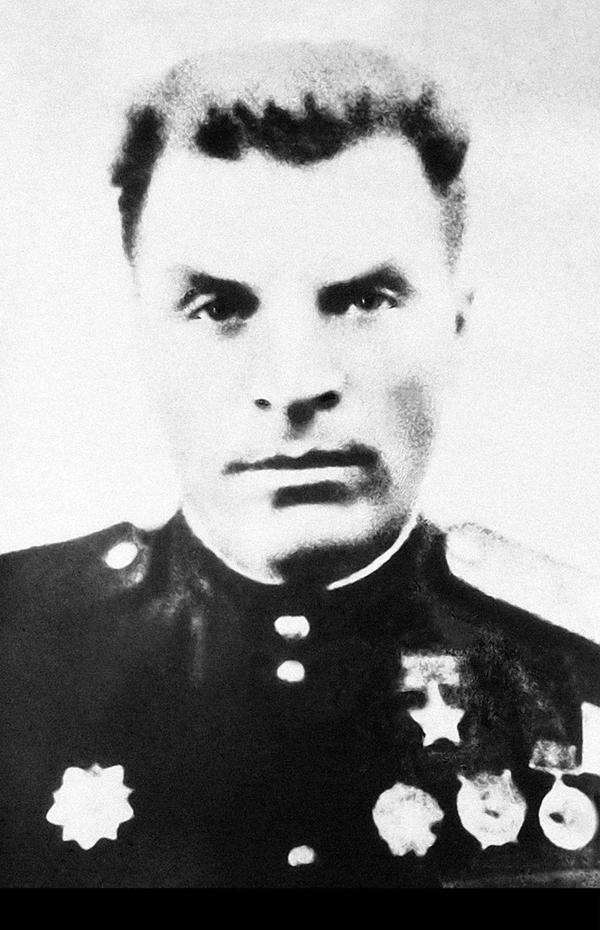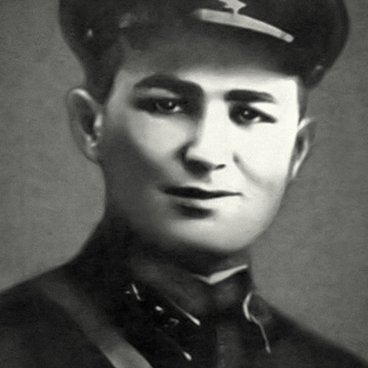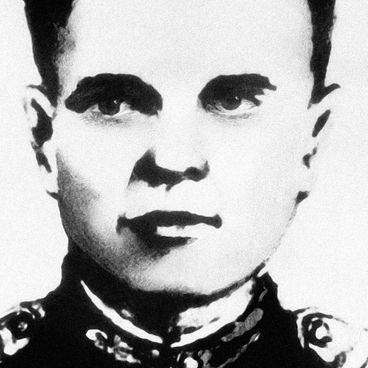Ivan Mikhailovich Nekrasov (1892—1962) was born in the village of Bereznik, Kostroma Oblast, into a peasant family with many children. The youth started working at an early age: he assisted in logging and was a crewman on steamers.
In 1913, he was drafted into the army to the 14th Mitavsky Hussar Regiment, located in Chenstochov. Ivan Nekrasov proven to be good at warfare, reaching the rank of officer. During the First World War, which started soon afterwards, he fought on a territory of contemporary Poland, and received several wounds. He was awarded with the highest combat award thrice: one Cross of St. George and two St. George Medals.
During the revolutionary events of October 1917, Ivan Nekrasov was in the capital. He fought for change in power on Bolsheviks side, defending the Smolny Institute, where the Military Revolutionary Committee and the Second All-Russian Congress of Soviets of Workers' and Soldiers' Deputies took place.
He visited his homeland for a short while after the revolution, but soon departed back to operating military forces to command a platoon of the Second Petrograd Cavalry Regiment of the Fifth Army, which fought eastward against Admiral Kolchak’s forces. Through battle, Ivan Nekrasov reached Siberia. He was wounded in Omsk and stayed there after his recovery. During the Sino-Soviet conflict in 1929, Ivan Mikhailovich defended the Chinese Eastern Railway from the Mukden Army that attempted to capture it.
Ivan Nekrasov was a regiment commander of the 107th Rifle Division during fascist Germany’s first attack. This division liberated Yelnya in August of 1941. Ivan Nekrasov was awarded the title of Hero of the Soviet Union, the Order of Lenin, and the ‘Gold Star’ medal.
In 1943, he was trusted to command the 52nd Rifle Division of the Guard that successfully fought in the Battle of Kursk and the Belgorod-Kharkov Offensive Operation under his command. In September of 1943, Ivan Nekrasov was promoted to Major General for his success in battle.
Ivan Mikhailovich suffered multiple wounds, but always returned back in line. He liberated the Baltic states and Ukraine from the Hitlerites and spent the Victory Day in Austria. In 1946, he was forced to retire from service due to his damaged health. After his retirement, he stayed in Krasnodar and died in 1964.
In 1913, he was drafted into the army to the 14th Mitavsky Hussar Regiment, located in Chenstochov. Ivan Nekrasov proven to be good at warfare, reaching the rank of officer. During the First World War, which started soon afterwards, he fought on a territory of contemporary Poland, and received several wounds. He was awarded with the highest combat award thrice: one Cross of St. George and two St. George Medals.
During the revolutionary events of October 1917, Ivan Nekrasov was in the capital. He fought for change in power on Bolsheviks side, defending the Smolny Institute, where the Military Revolutionary Committee and the Second All-Russian Congress of Soviets of Workers' and Soldiers' Deputies took place.
He visited his homeland for a short while after the revolution, but soon departed back to operating military forces to command a platoon of the Second Petrograd Cavalry Regiment of the Fifth Army, which fought eastward against Admiral Kolchak’s forces. Through battle, Ivan Nekrasov reached Siberia. He was wounded in Omsk and stayed there after his recovery. During the Sino-Soviet conflict in 1929, Ivan Mikhailovich defended the Chinese Eastern Railway from the Mukden Army that attempted to capture it.
Ivan Nekrasov was a regiment commander of the 107th Rifle Division during fascist Germany’s first attack. This division liberated Yelnya in August of 1941. Ivan Nekrasov was awarded the title of Hero of the Soviet Union, the Order of Lenin, and the ‘Gold Star’ medal.
In 1943, he was trusted to command the 52nd Rifle Division of the Guard that successfully fought in the Battle of Kursk and the Belgorod-Kharkov Offensive Operation under his command. In September of 1943, Ivan Nekrasov was promoted to Major General for his success in battle.
Ivan Mikhailovich suffered multiple wounds, but always returned back in line. He liberated the Baltic states and Ukraine from the Hitlerites and spent the Victory Day in Austria. In 1946, he was forced to retire from service due to his damaged health. After his retirement, he stayed in Krasnodar and died in 1964.



